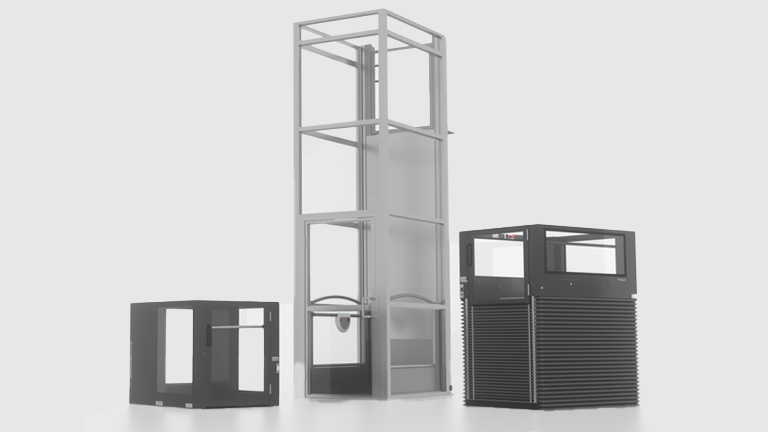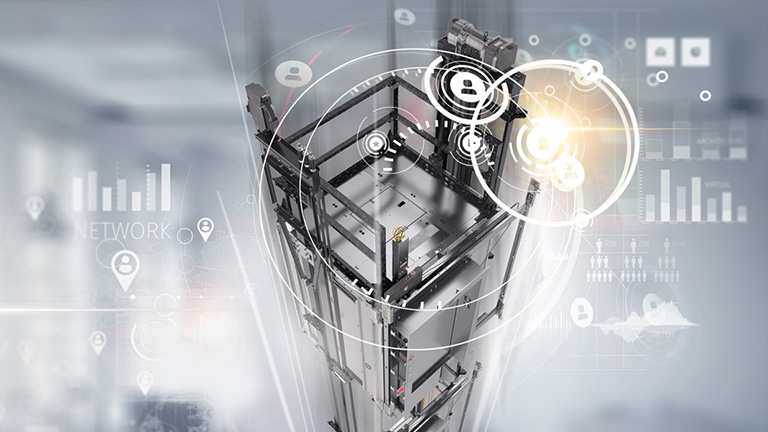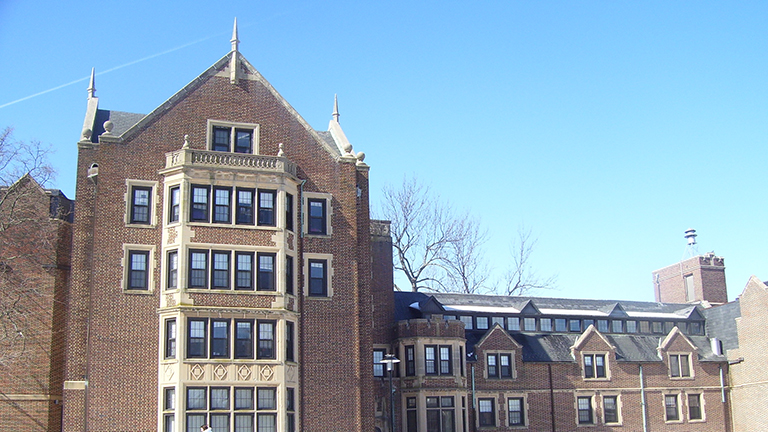| Wheelchair Lift Glossary | |
|---|---|
| AC Operation | Requiring Alternating Current (AC) to function. The power supply for most buildings is AC; this term can be somewhat misleading with wheelchair lifts as a lift may require connection to an AC power supply, have an AC motor, yet have Direct Current (DC) controls. |
| Access Ramp | A ramp necessary for some wheelchair lifts, to get wheelchair users up to a platform that is higher than floor level. Many jurisdictions now require that the gate at an access ramp must have a power operator for ease of entry. |
| Accessibility | In ADA-related discussions, a term that refers to provisions for equal access by persons with disabilities. |
| Accessible Path of Travel | A continuous, unobstructed route to and from an area. This route must accommodate travel and use by persons with disabilities, and may include phones, restrooms, drinking fountains, etc. (Refer to code sections for complete requirements) |
| ADA | An Acronym for, “Americans with Disabilities Act” (enacted by the United States Congress in 1992) |
| ADA Compliance Governing/Jurisdiction Authority | A public body that is responsible for confirming ADA compliance. More than one authority may have jurisdiction in some locations. As such, typical authorities include the state elevator division, architectural access board, fire marshal, state insurance department, etc. Check with your local Planning and Development department for more information. |
| ADA Compliant | Meeting the requirements of the Americans with Disabilities Act |
| ADA Lift (ADA-Compliant Lift) | A lift which meets ADA requirements, and whose use is limited to persons with disabilities. |
| ADA Ramp (ADA-Compliant Ramp) | A ramp that complies with ADA guidelines for use by persons with disabilities. |
| ADAAG | Acronym for “Americans with Disabilities Act Accessibility Guidelines” (established by the United States Access Board) |
| Americans with Disabilities Act | Federal legislation, signed into law in 1990, meant to guarantee people with disabilities have the same opportunities as everyone else to participate in mainstream American life. |
| Americans with Disabilities Act Accessibility Guidelines | A set of enforceable standards, established by the United States Access Board, which defines specific design criteria for making accommodations in public places as required by the Americans with Disabilities Act. |
| Architectural Barrier | Any aspect in the design of a facility that limits the access and mobility of disabled persons. |
| Barrier-Free | Accessible to persons with disabilities. |
| Building Safety Code | Requirements that specify minimum standards for building construction and occupancy, primarily to protect public health, safety, and welfare. |
| Chain-Hydraulic Drive | A platform lift drive system where one or more hydraulic cylinders indirectly provides a lifting force through a chain. |
| Clear Width | The minimum width required for a lift to be safely installed, typically consisting of the exterior platform width plus side operating clearances. The term also commonly refers to the width of the lift platform available for the user (see “Platform Clear Dimensions”). |
| Clearances | Dimensions that allow sufficient space for safety, maneuvering, or access to controls |
| Constant-Pressure Operating Switch | A switch that must be held down to maintain contact. A platform lift will stop as soon as pressure on the switch is released. |
| DC Operation | Requiring Direct Current (DC) to function; this term can be somewhat misleading with wheelchair lifts as the power supply for most buildings is AC, so even lifts that have a DC motor and DC controls will likely be designed for connection to an AC power supply. |
| Direct Acting Hydraulic Drive | A platform lift drive system where one or more hydraulic cylinders are connected directly to the platform to provide lifting power. |
| Dock Plate | A metal plate that folds down to create a smooth transition between a portable lift and the upper landing. |
| Drivetrain | The mechanical system that raises the platform of a wheelchair lift. |
| Egress Route | An unobstructed path available for persons to leave a building. |
| Elevator | A full elevator is a lifting device appropriate for use by the general public and capable of a wide range of uses, such as: transporting cargo, large groups of people, etc. |
| Enclosed Platform lift | A platform lift that is entirely inside a shaft or hoistway, with no moving parts in areas that are accessible to the general public. |
| Exterior Platform Dimensions | Not to be confused with “platform clear dimensions,” exterior platform dimensions constitute the floor space (or “footprint”) that a wheelchair lift occupies. |
| Hand Crank Drive | A platform lift drive system that is operated by having a person outside the lift turn a crank. Since this drive system requires an attendant instead of allowing for independent use as required by the ADA, it is considered non-ADA compliant. |
| Handicap Ramp | An inclined surface that is intended for use by persons with disabilities, often (but not necessarily) ADA compliant. |
| Hydraulic Hand Pump | A hand operated hydraulic pump used to raise and lower the lift without power. |
| Inclined Platform Lift (IPL) | A platform lift which moves a user diagonally upward – usually attached to a wall or rail beside a stair. Not to be confused with a “stairway chairlift,” which has a place for a person to sit, but which cannot accommodate a user in a wheelchair. |
| Independent Use | Use of a device by a person under their own power without assistance from other people |
| Inspector | A Representative of a government agency, who has the authority to determine whether or not a particular lift installation meets code requirements. |
| Installation Pit | A depression in the floor or pad where a lift will be mounted, necessary for installing some lifts in order to eliminate the need for an access ramp (pits are typically from 3″ to 6″ deep). |
| Lift | A device designed to raise people over obstacles or any distance |
| Lift Dealer | A company that sells lifts, usually only specific brands for which the dealer is authorized by the manufacturer. A dealer is often licensed as an installer, and sells installed lifts as a complete package. |
| Lift Distributor | A company that buys lifts or lift components from the manufacturer, to resell to the general public. |
| Lift Installer | A company that puts a lift in its location, usually including assembling the lift components, anchoring in place, and connecting a power source. A specific license to install lifts is required by some jurisdictions; the installer may also manage the permitting and inspection of the lift |
| Lift Manufacturer | A company with a factory/production facility, where it makes lifts and lift components. |
| LULA (Limited Use, Limited Access) Elevator | A light duty elevator that may be used in homes, or in public facilities where its use is restricted to persons with disabilities. |
| Machine Tower | A tall side enclosure that houses the drivetrain on most vertical platform lifts; lifts without towers are sometimes referred to as “towerless.” |
| Manual Crank | A device that allows a non-hydraulic lift to be lowered manually in the event of a power failure (not to be confused with a “hand crank” drive system). |
| Manual Lowering Valve | A device that allows a hydraulic lift to be lowered manually in the event of a power failure. |
| Operating Permit | A document that verifies a lift in a specific location has been approved for use by the general public. |
| Permanent Wheelchair Lift | A platform lift that is designed to be anchored to permanent parts of a venue’s structure, and permanently tied into the venue’s electrical system. Permits required are usually similar to elevator permits. |
| Permit | A document issued by a governing body, granting approval to install a platform lift in a particular application. The lift will still need to be inspected and granted an operating certificate before it can legally be used by the public |
| Pinch Point | A danger presented by two surfaces in a close proximity that may pinch or crush as the gap between them closes |
| Platform Clear Dimensions | Not to be confused with “exterior platform dimensions,” platform clear dimensions constitute the area inside a wheelchair lift that allows sufficient unimpeded space for safety, maneuvering, or access to controls. |
| Platform Gate | A protective gate that is attached to the lift platform, and therefore travels up and down with the lift platform. |
| Platform Lift | A lift intended to be used by persons with disabilities, primarily wheelchair users. Platform lifts for use in public facilities must be ADA compliant |
| Portable Wheelchair Lift | A platform lift that is self contained, and not permanently attached to the venue’s structure. Often this type of lift is exempt from permanent lift permitting requirements. |
| Power-Operated Gate | A gate that opens under its own power at the touch of a button, and that closes automatically as well, often with a built-in delay and other safety features. |
| Primary Function Area | An area that supports a main activity for which the facility is intended. |
| Roped Hydraulic Drive | A platform lift drive system where one or more hydraulic cylinders indirectly provides lifting force through a rope and pulley system. |
| Screw Drive | A platform lift drive system that employs a large, turning acme-screw or ball-screw to provide lifting power. |
| Self-Closing Gate | A gate that closes by itself. Some gates may need to be opened manually, yet be self closing by a spring or piston mechanism. |
| Shearing Hazard | A danger presented by a moving piece of equipment that is too close to a stationary surface. Near a platform lift, shearing hazards may be created by overhangs, open railings, metal panels, edges of a wall, etc. |
| Shroud | A term sometimes used to refer to the machine tower of a lift. |
| Stage Guard | A device used to prevent wheelchair users from rolling off the front of a stage when recalling a lift that is on the lower level. The stage guard attaches to the upper platform gate of the lift, and is required to be 6″ higher than the edge of the stage when the lift is at the lower level. |
| Under-Platform Safety Pan | A plate or series of plates connected to sensors, covering the underside of a lift platform, that stop the lift during downward motion of the platform if an object is encountered. |
| Unenclosed Platform Lift | A platform lift not surrounded by a shaft or hoistway. |
| Variance | Permission from the local code authority (usually in writing) to deviate from specific code requirements, in response to a specific request. |
| Vertical Platform Lift (VPL) | A platform lift whose lifting motion is straight up and down as apposed to side to side or diagonally. |
| Wheelchair Lift | See “platform lift.” Wheelchair lift is a common term for platform lift, which is the industry-standard term. |
| Worm Gear Drive | A platform lift drive system that employs a tooth gear and screw-like cylinders are connected directly to the platform to provide lifting power. |

ADA Compliance, Lift Information


